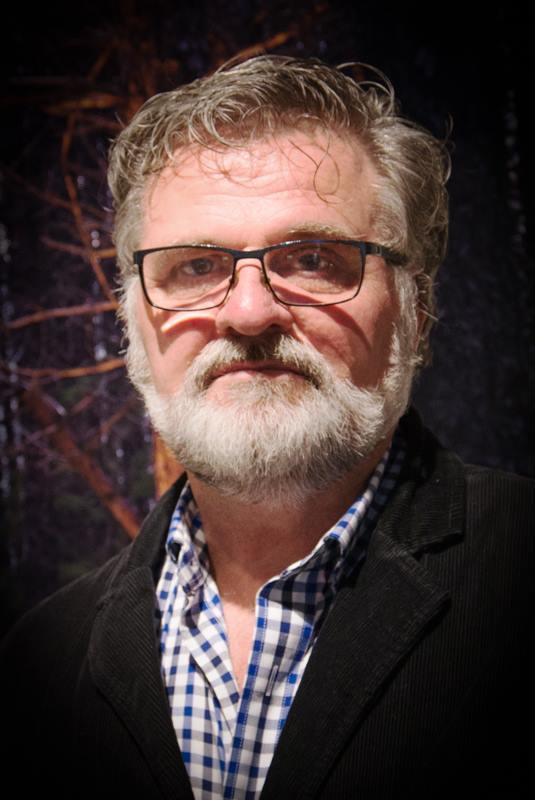When asked by Glass Quarterly about his attraction to the mediums of clay and glass the newly appointed executive director of the Canadian Clay & Glass Gallery simply responded in an email interview: “The material." Denis Longchamps went on to explain that "both are transformed by fire. Clay and glass have always been at the core of my curatorial practice and I also like to include textiles, wood and metal to provide a broader context. I did take a few classes in clay and stained glass so there is a personal attraction to both mediums. But there is more — both are hard and strong materials yet fragile at the same time. These opposing forces offers many possibilities for concept exploration.” This abundance of possibilities reflects Longchamps view of the porous boundaries between art and craft, and his resistance to definitions and standard narratives.
Longchamps’ selection as executive director was announced on June 14th, 2017 by Tom Mennill, chair of the Canadian Clay & Glass Gallery board. Longchamps will officially take the reins of this Waterloo, Ontario-based center on August 1st, succeeding William D. Poole.
The Canadian Clay & Glass Gallery is home to a collection of historical and contemporary Canadian ceramic, glass, and enamel art. It has the mission to support Canadian ceramic and glass artists and present "exhibitions that challenge ideas and perceptions of the definitions of art, craft, and design today.”
Longchamps' selection is the culmination of a search that began in February 2018. Board chair Mennill said in a prepared statement: “We are excited to have Denis joining our organization during the Gallery’s 25th Anniversary year and are pleased for Denis to be assuming the leadership of a debt- and deficit-free institution from current Executive Director Bill Poole.”
Longchamps will move from the Art Gallery of Burlington, where he has served as artistic director and chief curator since 2013. He holds a PhD in art history (2009) from Concordia University where he was the administrator of the Jarislowsky Institute for Studies in Canadian Art from 2006 to 2011. Longchamps has also taught art and craft history at Concordia University, York University, and at Dawson College. In addition to teaching, he has been involved with Lyndal Osborne’s “Of Water and Tides” (2014), the touring “Naked Craft” (2015-2017), and various components of the Canadian Craft Biennial (2017) including four exhibitions, two residencies, workshops and an international symposium. On top of this, Longchamps regularly contributes essays, articles and reviews for magazines and journals centered on arts and crafts, and was the publisher and managing editor of Cahiers métiers d’art: Craft Journal.
Of his personal definition of craft, and his thoughts on the dynamics between craft and art, Longchamps told Glass Quarterly: “I am often asked to define craft but not art, which in itself is rather interesting, as if art had a universal definition. Skills and materials are part of my definition of craft and crafters can make thought-provoking art, carefully designed objects, and craft production functional items. I do believe in fluid definitions.” He also cites Aram Han Sifuentes, who wrote in her text Steps Towards Decolonizing Craft from the Newsletter of the Textile Society of America, Spring 2017 that the “distinction between craft and art is, in and of itself, a Western concept and a symptom of cultural colonization,” and suggests that “we need to move away from the values that such a hierarchy proposes and supports.”
In regards to the historical and cultural focus of the Canadian Clay & Glass Gallery, Longchamps further calls for a reexamination of what has been taken as given, stating: “There is a necessary dialogue between history and contemporary practice, we need to know where we are coming from to better understand where we are, and where we are going, but not all contemporary work needs to engage with history. We need to acknowledge that history can be rewritten to present a different voice, one that was ignored or neglected.”
Longchamps is on the lookout for ways to improve and expand the gallery at all levels. He has previously said in a prepared statement: “I am thrilled to have been selected to lead this important national gallery as it embarks on its second quarter century, and I look forward to working with staff, board and other volunteers to realize its full potential.” In his exchange with Glass Quarterly, Longchamps noted that he is “a team player” who plans to coordinate closely with all staff in their work to develop exhibitions and programming, and to achieve the Gallery’s strategic goals, which include attaining further recognition in the global discourse on craft and specifically on clay and glass. Longchamps is already involved with Juliette MacDonald from the Edinburgh College of Arts, Sandra Alfoldy from NSCAD University, and Emma Quin from the Textiles Museum of Canada, with whom he previously worked with on “Naked Craft,” in the planning of another project that aims to examine and question long accepted narratives on craft and how it is understood locally, nationally and globally, and which will also explore the economic value of craft.




